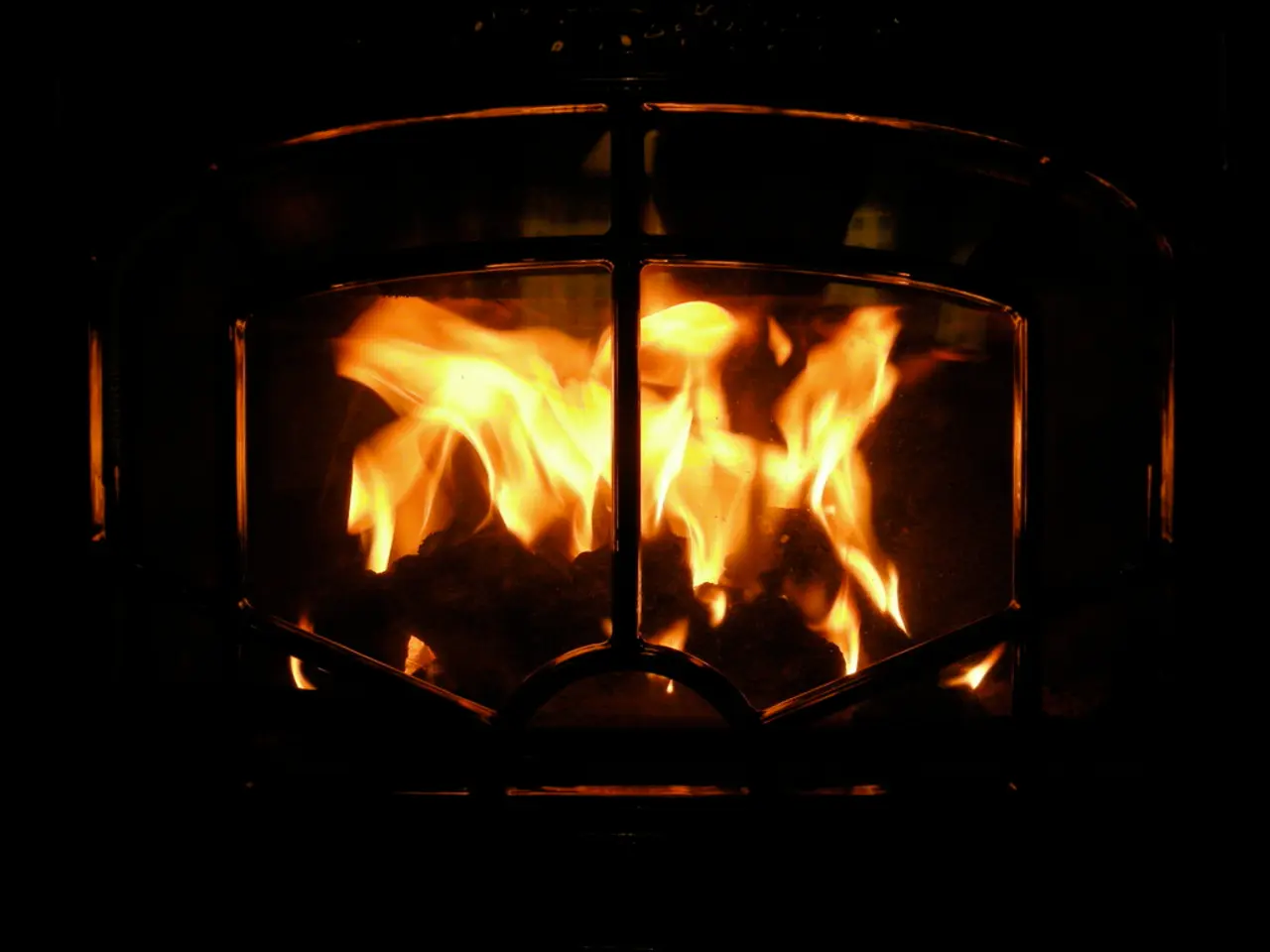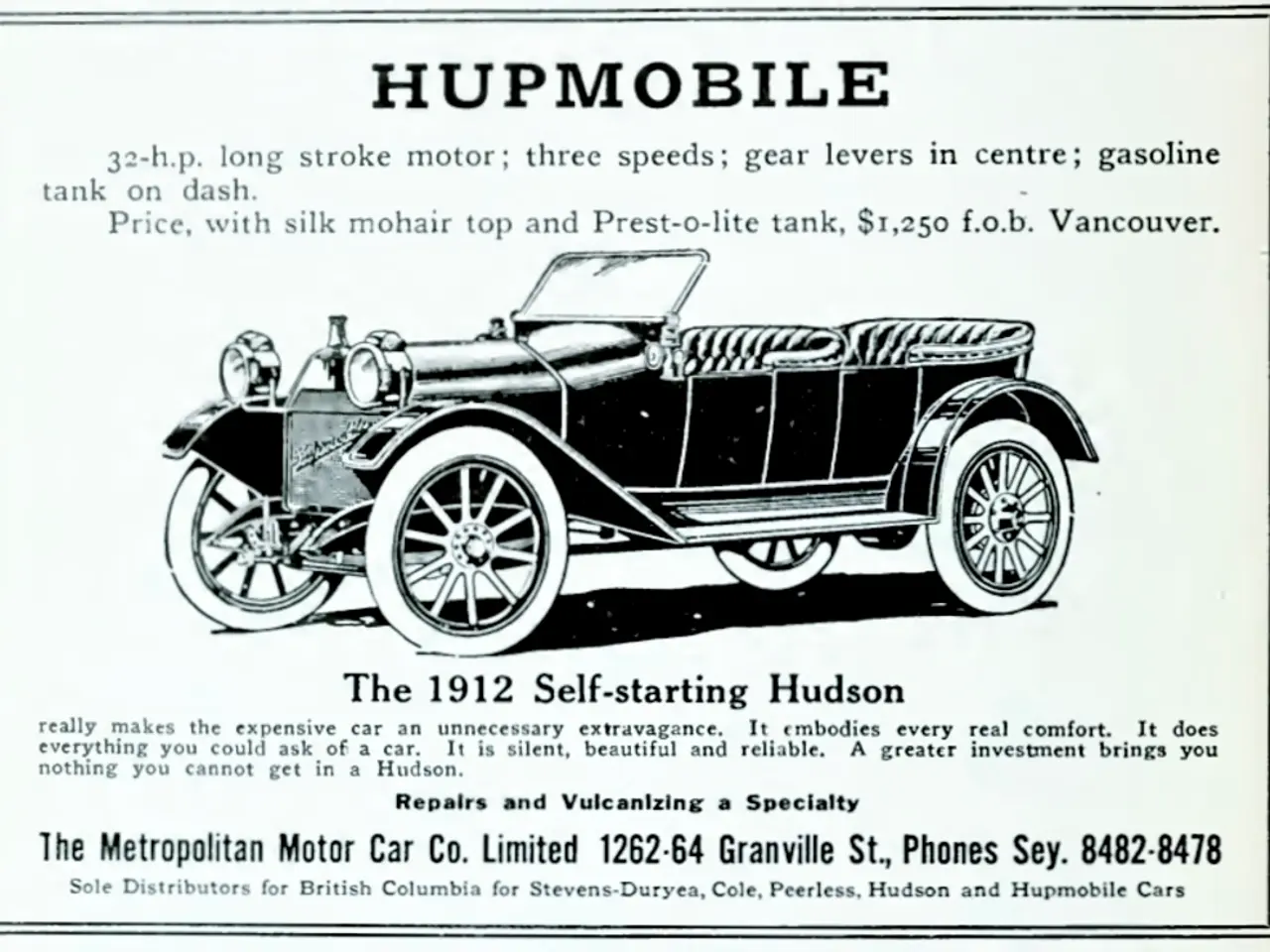Instructions on Installing a Kitchen Log Burner Correctly
A log burner in a kitchen can add a touch of warmth and cosiness, but it's essential to ensure that the installation is carried out safely and efficiently, complying with Part J of the Building Regulations. Here's a guide to help you navigate the process.
Ventilation and Extraction
Adequate ventilation is crucial for the safe and effective operation of a log burner in a kitchen. The room should have vents or an openable window to allow fresh air entry. The flue should be properly installed to safely exhaust smoke outside, maintaining clearances from combustible materials.
Room Size
The kitchen should be large enough to safely accommodate the log burner with enough clearance all around. This ensures safe heat dissipation and provides room for maintenance access. The minimum room size depends on the stove model and output, but generally, a minimum volume is required to prevent overheating and inadequate oxygen.
Safety Requirements
- Install the log burner on a non-combustible hearth with suitable size, typically extending at least 300mm to the sides and 450mm in front of the appliance.
- Maintain required clearances to combustible walls and kitchen fittings as specified by the manufacturer and Part J regulations.
- Install appropriate fire stops and insulation where the flue passes through walls or ceilings.
- Fit a suitable fire guard if children or vulnerable persons are present.
- Smoke and carbon monoxide detectors must be fitted in the same room and adjoining rooms.
- Follow building control approval and inspection processes as required by Part J.
Compliance with Part J of the Building Regulations
These regulations cover heat producing appliances, requiring installation to prevent fire risk and ensure safe flue chimney construction, ventilation, and guarding. You must ensure the appliance and installation are certified, meet the approved document standards (e.g., Approved Document J), and have any necessary permissions.
Additional Considerations
- Consult a qualified, HETAS-registered installer to ensure safe installation and adherence to Building Regs.
- Inform your home insurance company if you plan on installing a log burner.
- Fire safety essentials include smoke alarms and carbon monoxide detectors, which should be placed near the kitchen and tested regularly.
- The size of the kitchen will influence the type of stove chosen.
- Proper chimney or flue systems are essential for safe operation of a log burner.
- Plaster, a combustible material, may need to be protected with a wall-mounted heatshield or replaced with a non-combustible material during installation.
- External air kits for log burners supply fresh air directly from outside, reducing the risk of smoke entering the room.
- Proper measures should be taken during installation to ensure adequate ventilation and balancing air pressure to prevent smoke ingress into the kitchen.
- Sufficient clearance around the burner is necessary to prevent fire hazards.
- The size of the log burner needed can be calculated using an online calculator.
- Compact ecodesign stoves are a smart choice for small kitchens or homes in smoke-controlled areas.
Alternatives to a Log Burner
If a log burner isn't suitable for your kitchen, alternatives include electric stoves, underfloor heating, and kitchen radiators. Each option offers its own benefits and should be considered based on your specific needs and the characteristics of your kitchen.
By following these guidelines, you can ensure a safe and efficient installation of a log burner in your kitchen, enhancing its comfort and aesthetic appeal while maintaining safety and compliance with Part J of the Building Regulations.
- Adequate ventilation is essential for a log burner's safe and effective operation in a kitchen, with vents or an openable window allowing fresh air entry, and the flue properly installed to exhaust smoke safely outside.
- The kitchen room size should be sufficient to accommodate the log burner, ensuring safe heat dissipation and maintenance access, with the minimum room size depending on the stove model and output.
- Safety requirements include installing the burner on a non-combustible hearth with appropriate size, maintaining clearances to combustible walls and kitchen fittings, fitting fire stops and insulation, having a fire guard where necessary, installing smoke and carbon monoxide detectors, and following building control approval and inspection processes.
- Compliance with Part J of the Building Regulations involves ensuring the appliance and installation are certified, meet approved document standards, and have any necessary permissions, covering heat producing appliances, fire risk prevention, safe flue chimney construction, ventilation, and guarding.
- Consulting a qualified, HETAS-registered installer, informing your home insurance company, and installing fire safety essentials like smoke alarms and carbon monoxide detectors are additional considerations.
- Proper chimney or flue systems, protecting plaster with a heatshield or using non-combustible materials during installation, using external air kits, taking measures for adequate ventilation and balancing air pressure, and ensuring sufficient clearance around the burner are necessary for safe operation.
- An online calculator can help determine the size of the log burner needed, and compact ecodesign stoves are a smart choice for small kitchens or homes in smoke-controlled areas.
- If a log burner isn't suitable, alternatives include electric stoves, underfloor heating, and kitchen radiators, each offering their own benefits based on specific needs and kitchen characteristics.




